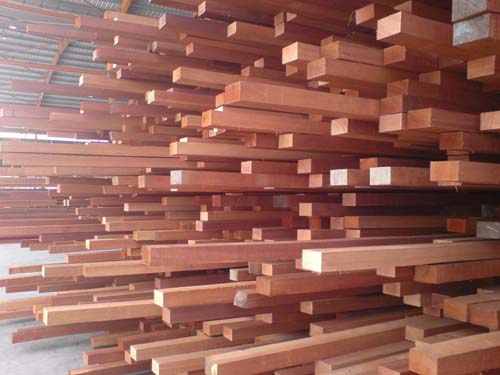 |  |
 | 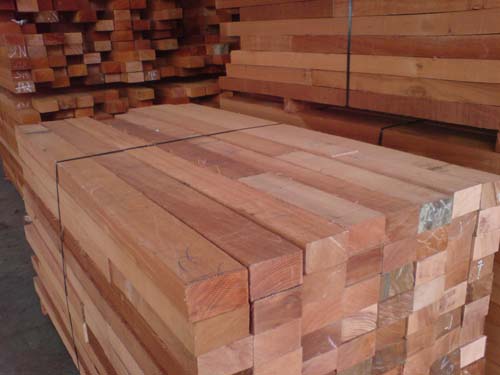 |
 | 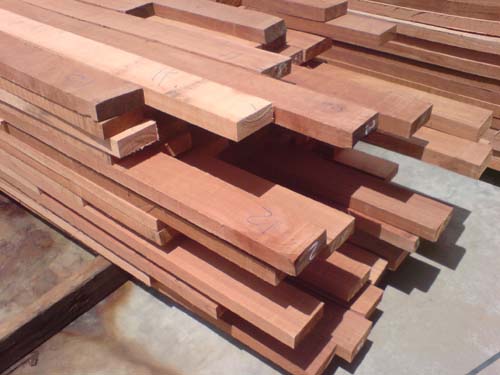 |
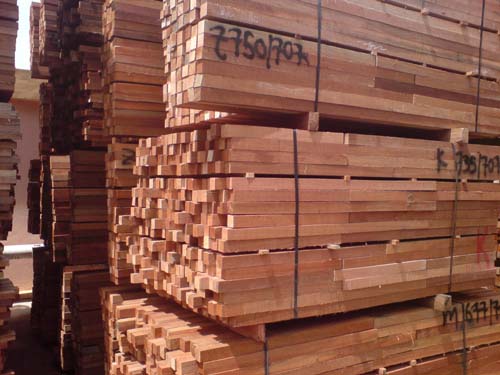 | 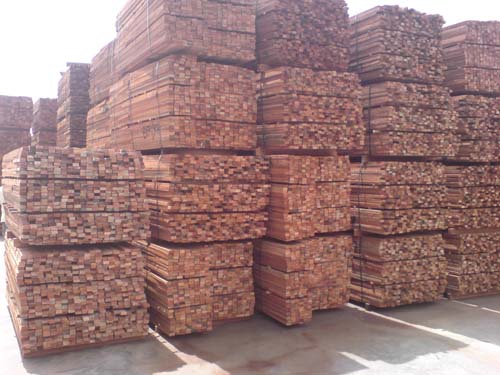 |
INTRODUCTION
The Standard Malaysian Name for the dark red and lightweight timber of the genusShorea (Dipterocarpaceae). Vernacular names used include meranti (Peninsular Malaysia and Sarawak) with various epithets, seraya (Sabah) with various epithets,nemesu (Peninsular Malaysia), nemusu (Peninsular Malaysia), seraya (Peninsular Malaysia and Sabah), obar suluk (Sabah) and also various local names too numerous to list here. Major species producing this timber include S. acuminata (partly), S. argentifolia, S. curtisii, S. ovata, S. monticola, S. pauciflora, S. platyclados and S. slootenii. The sapwood is pink with a grey tinge and is not clearly defined from the heartwood, which is medium red to deep red to deep red-brown.
DENSITY
The timber is a Light Hardwood with a density of 415-885 kg/m3 air dry.
NATURAL DURABILITY
The standard graveyard tests on untreated specimens carried out by the Forest Research Institute Malaysia (FRIM) have classified dark red meranti as moderately durable with an average service life ranging from about 2.0 years (S. singkawang) to 3.9 years (S. platyclados). For the species S. curtisii, S. pauciflora, S. platycladosand S. acuminata, the heartwood is classified as moderately durable (with an average service life of 2-5 years). Similar tests on S. pauciflora at Princess Risborough (U.K.) have indicated that the timber is moderately durable with a service life of 10-15 years (under temperate conditions). The sapwood of dark red meranti is susceptible to dry-wood termite attacks, which may eventually spread to the heartwood. However, an initial invasion of the heartwood is less likely to occur. Untreated timber of S. curtisii was only slightly attacked by marine borers after eight months submergence at Port Klang (Thomas, 1933). Preliminary work done by Oliver & Woods (1957, 1959) have tentatively classified dark red merantias resistant to such attacks.
PRESERVATIVE TREATMENT
The timber is difficult to treat with preservatives. Generally, it was found that all forms of meranti (including dark red meranti) absorb less preservative than kempasand keruing when subjected to identical treatments.
TEXTURE
Texture is moderately coarse and even, with interlocked grain.
STRENGTH PROPERTIES
The timber falls into Strength Group C (Engku, 1988b) or SG 5 (MS 544:Part 2:2001).
Strength Properties of Dark Red Meranti
Species | Test Condition | Modulus of Elasticity(MPa) | Modulus of Rupture(MPa) | Compression parallel to grain (MPa) | Compression perpendicular to grain (MPa) | Shear strength (MPa) |
S. acuminata | Green | 10,500 | 54 | 27.4 | 2.41 | 6.3 |
Air dry | - | - | - | - | - | |
S. curtisii | Green | 12,800 | 69 | 36.3 | 3.86 | 7.2 |
Air dry | 13,900 | 90 | 45.4 | 5.03 | 8.0 | |
S. pauciflora | Green | 12,700 | 71 | 37.7 | 3.45 | 7.5 |
Air dry | - | - | - | - | - | |
S. platyclados | Green | 11,300 | 58 | 30.0 | 2.69 | 6.3 |
Air dry | 12,100 | 77 | 39.6 | 4.14 | 8.7 | |
S. singkawang | Green | 10,100 | 55 | 31.8 | 3.03 | 7.6 |
Air dry | 11,200 | 74 | 38.8 | 2.97 | 8.3 |
MACHINING PROPERTIES
It is easy to saw and work and produces a smooth planed surface.
Machining Properties Dark Red Meranti
Species | Test Condition | Sawing | Planing | Boring | Turning | ||||
Re-sawing | Cross Cutting | Ease of planing | Quality of finish | Ease of boring | Quality of finish | Ease of turning | Quality of finish | ||
S. acuminata(part only; the darker coloured varieties) | Green | easy | easy | easy | smooth | easy | smooth | - | - |
Air dry | easy | easy | easy | smooth | easy | smooth | easy | moderately smooth | |
S. curtisii | Green | easy | easy | easy | smooth to slightly smooth | easy | smooth | - | - |
Air dry | easy | easy | easy | moderately smooth | easy | smooth | - | - | |
S. pauciflora | Green | easy | easy | easy | smooth | easy | smooth | - | - |
Air dry | easy | easy | easy | smooth | easy | smooth | easy | smooth | |
S. platyclados | Green | very easy | easy | easy | smooth | moderately easy | smooth | - | - |
Air dry | easy | easy | easy | smooth | moderately easy | smooth | easy | smooth | |
S. singkawang | Green | easy | easy | easy | smooth | easy | rough | - | - |
Air dry | easy | easy | easy | smooth | easy | slightly rough | easy | smooth | |
NAILING PROPERTY
The nailing property is rated as good.
AIR DRYING
The seasoning properties of some species tested are summarised below:
Species | Time to air dry (months) | Remarks | |
13 mm thick boards | 38 mm thick boards | ||
S. curtisii | 2 | 3 | Fairly fast drying; free from seasoning defects. |
S. pauciflora | 2.5 | 4 | Fairly fast drying; free from seasoning defects. |
S. platyclados | 2 | 4 | Fairly fast drying; free from seasoning defects. |
S. singkawang | 3 | 5 | Fairly slow drying rate; free from seasoning defects. |
KILN-DRYING
Kiln Schedule F is recommended. The timber dries rapidly without any degrade.
Kiln Schedule F
Moisture Content (%) | Temperature (Dry Bulb) | Temperature (Wet Bulb) | Relative Humidity (%) (approx.) | ||
F | C | F | C | ||
Green | 120 | 48.5 | 111 | 44.0 | 75 |
60 | 120 | 48.5 | 109 | 43.0 | 70 |
40 | 125 | 51.5 | 109 | 43.5 | 60 |
30 | 130 | 54.5 | 109 | 43.0 | 50 |
25 | 140 | 60.0 | 115 | 46.0 | 45 |
20 | 155 | 68.0 | 124 | 51.0 | 40 |
10 | 170 | 76.5 | 136 | 58.0 | 40 |
SHRINKAGE
The shrinkage of some species tested is summarised below:
Species | Shrinkage (%) (Green to air dry) | Remarks | |
Radial | Tangential | ||
S. curtisii | 2 | 4.1 | High shrinkage |
S. pauciflora | 1.7 | 2.9 | High shrinkage |
S. platyclados | 2.1 | 4.4 | High shrinkage |
S. singkawang | 1.1 | 3.4 | Fairly high shrinkage, especially in the tangential direction. |
MOVEMENT IN SERVICE
The movement of seasoned timber is classified under Type I and Type II.
DEFECTS
All timbers in the meranti group are liable to be attacked by shot-hole and pin-hole beetles, but the attack is usually not serious in species of dark red meranti. Although most of these attacks take place in the living trees, any delay in extraction after felling may also lead to serious damage. Spongy heart is a common defect in the red meranti group. Timber with this defect is exceptionally brittle and may result in compression failure and the corresponding reduction in strength properties. In a study of logs of dark red meranti and light red meranti from Perak state, about 30 logs of seraya (S. curtisii), over 40 logs of nemesu (S. pauciflora) and more than 100 logs of light red meranti were found to contain varying degree of spongy heart. This presence of spongy heart was less severe and also less spread in dark red meranti than in light red meranti . But large sized logs of dark red meranti (bothseraya and nemesu) tend to rot away at the centre leaving a hollow core with active termite attack on the fringes (Mohd. Alwy, 1961). One prominent feature ofdark red meranti is the presence of exceptionally numerous and conspicuous lines of resin canals, which may be objectional to some user. Small resin pockets are present but they are seldom numerous. One case was noted in which abnormally large horizontal resin canals in S. ovata marred the appearance of the sawn timber.
USES
The timber is suitable for joinery, furniture, high class interior finishing, flooring, decking, panelling, partitioning, mouldings, skirtings, fancy doors, door and window frames and sills, staircase (angle blocks, rough bracket and tread), plywood, railway sleepers, posts, beams, joists, rafters, pallets (expendable type), vehicle bodies (framework, floor boards and planking), ship and boat building (keels, keelsons, framework and general planking), cooling tower (non structural members) and other light constructional works.
No comments:
Post a Comment